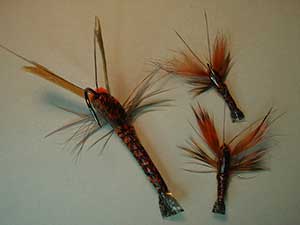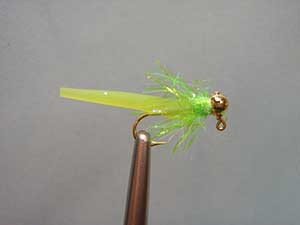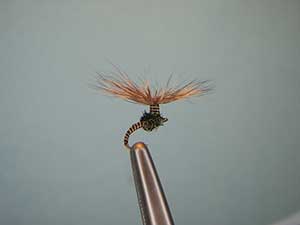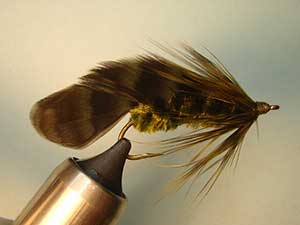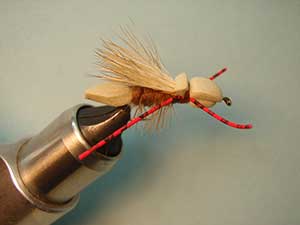HALEY’S COMET
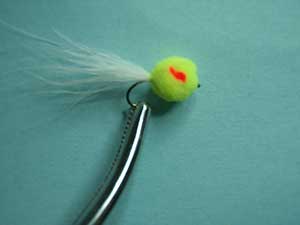
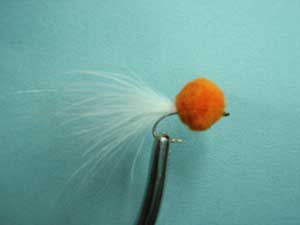
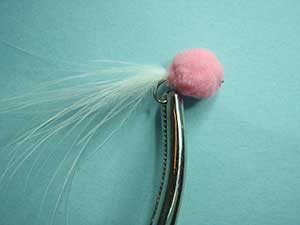
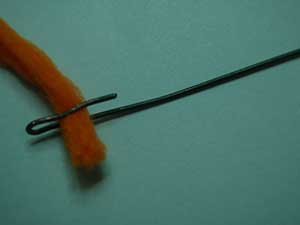
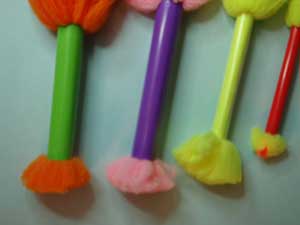
AARON JASPER Translated by CARL WUEBBEN
This is a simple but a little tricky to tie up – but very effective for catching fish feeding on other fish’s eggs when they are spawning. I call this a cheating fly because it seems like I’m bait fishing but it works so give it a try and see how you feel about it. Fish it on the bottom of your favorite stream. Try tying it in other colors like pink – red – orange – white and try it with a small dot on the side also and you can use the same tail or change the color on that also. Try tying on a piece of non-lead wire for weight on top of the hook shank it helps to sink the fly a little faster or leave it out and wait for it to soak up some water then sink (A split shot will work also). Just tie it in before you put the Mcfly foam on.
PATTERN
HOOK – Tiemco. TMC #2499 SPBL, or similar sizes #14 to #8 (I used Mustad # 3366 for the photos ) or try Mustad #C49 or Tiemco TMC #2488 hooks.
THREAD – 3/0 but can use 6/0 if you are careful, color to match the egg.
TAIL – White marabou
EGG – Mcfly foam in color of your choice
OTHER THINGS – Regular soda straw or milkshake straw that’s thicker (but the thinner the straw the less dense and smaller the egg). A thin piece of stout wire to make a tool.
HOW TO TIE
- Debarb hook – mount in vise – start thread in just before the bend of the hook and tie in the white marabou. About the length of the hook itself. (just the fibers not the shank of the feather)
- Move the thread forward to about mid shank and tie in the Mcfly foam by using a piece of straw. Cut about a three inch piece of straw and then cut a six inch piece of thin stout wire and bend one end about one inch in a very close u shape, just enough to hold the thickness of Mcfly foam your using for that fly (You can try using your bobbin threader but when I did it the darn thing broke). Now put the Mcfly foam into the u shape of your new homemade threader then pull it thru the straw and out the other end but just a small section, just enough to get a good hold onto it later to pull up on. The thicker the straw the more Mcfly foam you will need and the bigger the egg – just make sure you get a whole bunch into the straw real tight so it will come out real dense without any bald spots.
- Lay the straw with the foam in it up against the hook shank in the center where your thread should be and put a wrap over the straw loosely then bring it down and around to the front side of the foam then proceed to do two or three tight figure eight wraps – from where your thread is now (In front of the foam). Bring the thread under the hook shank then up from the back side then cross over the front side of the foam to the back of the foam (side facing you) and bring your thread over and under the back of the foam and back up the hook shank and your thread should be hanging right below the rear of the foam and on the side facing away from you. Now bring your thread across the front side of the foam and over the top of the hook shank and you will be right back where you started from - now do this once or twice more - then with your fingers on one hand pull up on the upper part and the other hand pulls down on the part with the straw to stretch the foam out so you can put more tighter wraps on. Now put some wraps on the foam to get the fibers closer together in the center by doing a posting type of wrap (Just a couple tight wraps) just go in a clockwise direction over the top part of the foam and very close to the hook shank and with every ¼ turn of thread pull it as tight as you feel you can without breaking the thread – this will coral the fibers and help hold it in place. Once you feel it’s secure bring your thread forward of the foam by using your fingers to move the fibers around the thread till you get it in front of the foam then whip finish and clip off the thread.
- Now grab the top part of the foam and pull up real tight but don’t twist it or you’ll get uneven parts and with a good sharp pair of scissors make a dome shape cut (Top of egg). Then pull out a little more foam from the straw and do the same for the bottom just pull down not up. Keep your cuts close to the shank or you will have too big of an egg and you will have to do a lot of trimming.
- Move the fibers around a little to get them to fill in the thinner areas and then clip anything that’s out of place or if it’s too big start trimming off just a little at a time so you don’t overdo it.
TIE UP A DOZEN OR TWO – AND GO FISHING*** But remember to practice C.P.R. (CATCH – PICTURE – RELEASE).

